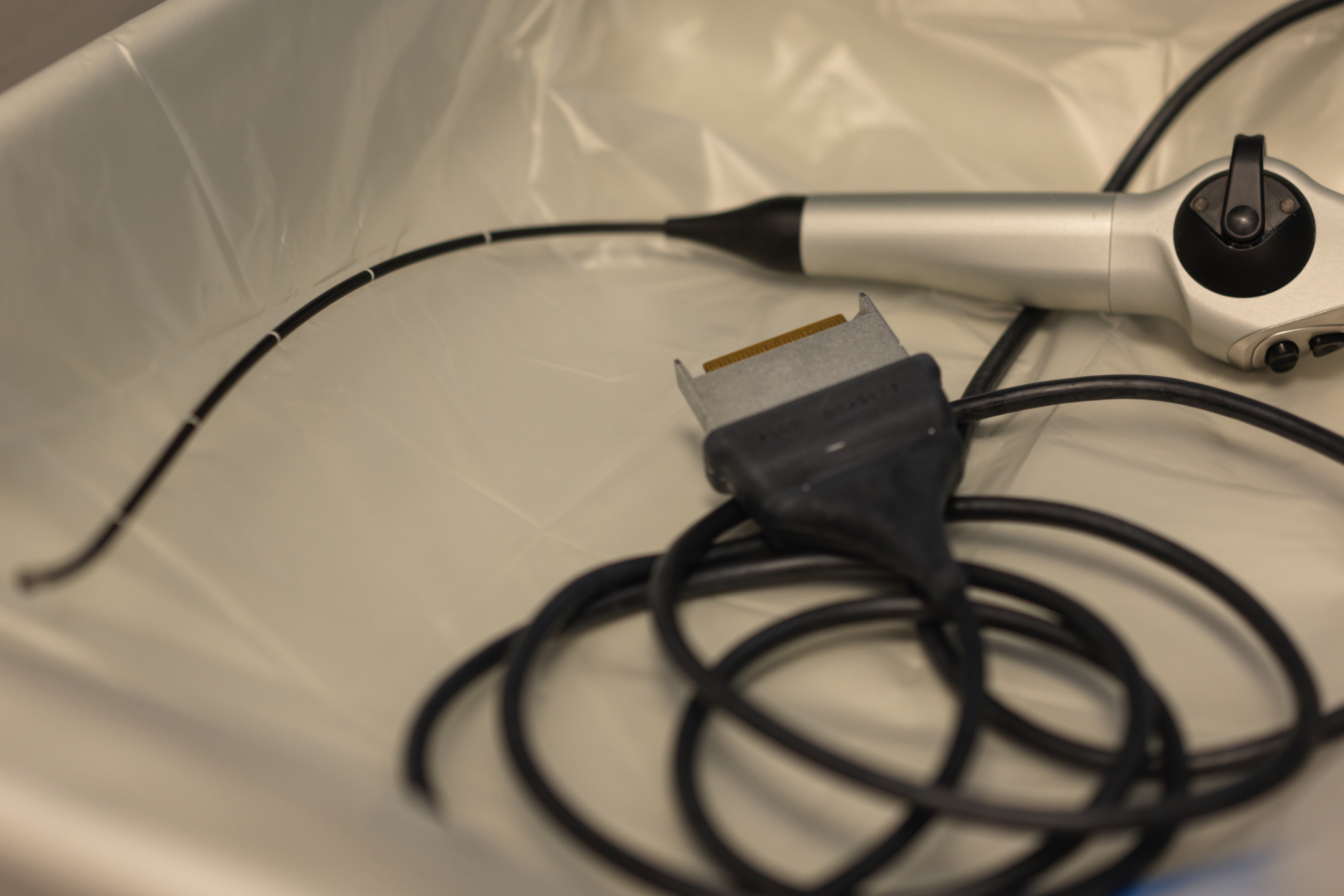
Flexible Nasendoscopy
Core ENT ProceduresUse this resource in conjunction with your real-world training

Experience Summary
Observe the examination of an upper aerodigestive tract using the flexible nasendoscope (FNE), commonly deployed by ENT surgeons.
Clinical Context
Flexible nasendoscopy is a common diagnostic procedure performed by clinicians, particularly in ENT practice, to assess the nasal cavity, nasopharynx, oropharynx, larynx, and upper airway. It involves the use of a thin, flexible fibreoptic or video endoscope that is gently passed through the nostril to provide direct visualisation of these anatomical regions. The procedure is minimally invasive, quick, and can be performed in an outpatient or clinic setting without the need for general anaesthesia.
The most frequent indications for flexible nasendoscopy include investigation of nasal obstruction, epistaxis (nosebleeds), hoarseness, throat discomfort, difficulty swallowing, unexplained ear symptoms (due to nasopharyngeal pathology), or suspected airway compromise. It is also used for assessing vocal cord function, detecting tumours or masses, evaluating post-surgical sites, and monitoring chronic conditions such as recurrent infections or inflammatory diseases.
In acute settings, flexible nasendoscopy may be essential for evaluating upper airway patency in patients with stridor, respiratory distress, or suspected foreign bodies. It is also a valuable tool in pre-operative airway assessment, particularly for patients with known or suspected difficult airways.
The procedure is generally well-tolerated, though it can cause mild discomfort, a gag reflex, or sneezing. Topical anaesthesia and decongestants are commonly applied to the nasal passages to improve comfort and visibility during the examination.
Key Points for Clinicians to Discuss with the Patient Prior to Flexible Nasendoscopy
- Purpose of the Procedure: Explain why flexible nasendoscopy is recommended — for example, to investigate specific symptoms such as hoarseness, nasal blockage, or throat discomfort, or to rule out concerning conditions such as tumours or airway abnormalities.
- Description of the Procedure: Inform the patient that a small, flexible camera will be gently inserted through the nose to examine the nasal passages, throat, and voice box. Reassure them that the procedure is quick and performed while they are awake.
- Anaesthetic Use: Discuss the application of a local anaesthetic spray and/or decongestant to reduce discomfort and facilitate the examination.
- Possible Sensations: Inform the patient they may feel mild discomfort, a tickling sensation, sneezing, or a temporary urge to gag or cough, but that these are normal and short-lived.
- Risks and Side Effects: Mention that the procedure is generally very safe, with rare risks including minor nosebleeds or transient irritation.
- Consent and Opportunity for Questions: Ensure the patient understands the procedure, has the opportunity to ask questions, and gives verbal or written consent as per clinical protocols.
Learning Outcomes
- Observe the examination using a flexible nasendoscope.
- Observe the anatomy of a patient undergoing an FNE.
- Observe effective communication skills during an invasive procedure.
External Resources
